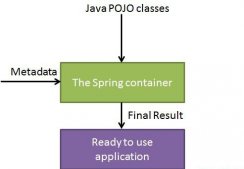JAVA 多线程爬虫实例详解
前言
以前喜欢Python的爬虫是出于他的简洁,但到了后期需要更快,更大规模的爬虫的时候,我才渐渐意识到Java的强大。Java有一个很好的机制,就是多线程。而且Java的代码效率执行起来要比python快很多。这份博客主要用于记录我对多线程爬虫的实践理解。
线程
线程是指一个任务从头至尾的执行流。线程提供了运行一个任务的机制。对于Java而言,可以在一个程序中并发地启动多个线程。这些线程可以在多处理器系统上同时运行。
runnable接口
任务类必须实现runnable接口,它只包含一个run方法。需要实现这个方法来告诉系统线程将如何运行。
Thread类
包含为任务而创建的线程的构造方法,以及控制线程的方法。
synchronized关键字
为避免竞争状态,防止多个线程同时进入程序的某个特定部分,即临界区,以便一次只有一个线程可以访问临界区。
利用加锁同步
Java可以显式加锁,一个锁是一个Lock接口的实例,它定义了加锁和释放锁的方法。
线程池
线程池是管理开发执行任务个数的理想方法。Java提供Executor接口来执行线程池中的任务,提供ExecutorService接口管理和控制任务。
使用线程池的方法获取url列表
|
1
2
3
4
5
6
7
8
9
10
11
12
13
14
15
16
17
18
19
20
21
22
23
24
25
26
27
28
29
30
31
32
33
34
35
36
37
38
39
40
41
42
43
44
45
46
47
48
49
50
51
52
53
54
55
56
57
58
59
60
61
62
63
64
65
66
67
68
69
70
71
72
73
74
75
76
|
import java.util.ArrayList;import java.util.List;import java.util.concurrent.ExecutorService;import java.util.concurrent.Executors;import java.util.concurrent.locks.Lock;import java.util.concurrent.locks.ReentrantLock;/* * 获取京东评论url列表 */public class MyThreading { private static String p_id = null; private static Url urls = null; public MyThreading(String p_id){ this.p_id = p_id ; // 京东商品的id urls = new Url(p_id); } public List<String> getUriList(){ ExecutorService executor = Executors.newCachedThreadPool(); for (int i = 0 ; i < 600 ; i ++){ executor.execute(new AddUrl(i)); // 添加任务到线程池 } executor.shutdown(); while (!executor.isTerminated()){} return urls.getList(); } public static class AddUrl implements Runnable{ int page; public AddUrl(int page){ this.page = page; } public void run(){ urls.addList(page); // 启动多线程任务 } } public static class Url { private static Lock lock = new ReentrantLock(); // 开启显式家锁 private static List<String> urlList = new ArrayList(); private String p_id; public Url(String p_id ){ this.p_id = p_id ; } public List<String> getList(){ return urlList; } public void addList(int page){ lock.lock(); try{ String url = "http://club.jd.com/productpage/p-" + p_id + "-s-0-t-0-p-" + String.valueOf(page) + ".html";// Thread.sleep(5); urlList.add(url); //添加url到url列表 }catch(Exception ex ){ } finally { lock.unlock(); // 解锁 } } } public static void main(String[] args) { String p_id = "2441288"; MyThreading myThreading = new MyThreading(p_id); List <String> urlList = myThreading.getUriList(); for(String url : urlList){ System.out.println(url); } System.out.println(urlList.size()); }} |
代码分析
- 代码的作用:获取京东评论的url列表
- 类的说明:MyThreading是主类, AddUrl和Url是它的内部类,AddUrl实现了runnable的接口,主要启动多线程服务运行Url的addList方法。而Url是最内核的部分 ,他提供addList任务和多线程的共享区域urlList,所以在实现添加url的步骤中,需要对urlList加锁。
- 线程池主要有两种类型,一个是固定线程池,即newFixedThreadPool;另一个是newCachedThreadPool,这个主要利用了缓冲机制,能动态地添加线程。在上述代码中,我主要使用了newCachedthreadPool.
使用线程池的方法根据url列表爬取网页元素
|
1
2
3
4
5
6
7
8
9
10
11
12
13
14
15
16
17
18
19
20
21
22
23
24
25
26
27
28
29
30
31
32
33
34
35
36
37
38
39
40
41
42
43
44
45
46
47
48
49
50
51
52
53
54
55
56
57
58
59
60
61
62
63
64
65
66
67
68
69
70
71
72
73
74
75
76
77
78
79
80
81
82
83
84
85
86
87
88
89
90
91
92
93
94
95
96
97
98
99
100
101
102
103
104
105
106
107
108
109
110
111
112
|
import java.io.BufferedReader;import java.io.InputStreamReader;import java.net.URL;import java.net.URLConnection;import java.util.ArrayList;import java.util.List;import java.util.concurrent.ExecutorService;import java.util.concurrent.Executors;import java.util.concurrent.locks.Lock;import java.util.concurrent.locks.ReentrantLock;import java.util.regex.Matcher;import java.util.regex.Pattern;public class ThreadingCrawel { private static Content content = null; private static List<String> urlList = null; public ThreadingCrawel(List<String> urlList){ this.urlList = urlList; content = new Content(); } public List<String> getContent(){ ExecutorService executor = Executors.newCachedThreadPool(); for (String url : urlList){ executor.execute(new AddContent(url)); } executor.shutdown(); while(!executor.isTerminated()){} return content.getContent(); } public static class AddContent implements Runnable{ String url; public AddContent(String url){ this.url = url; } public void run(){ content.addContent(url); } } public static class Content { private static Lock lock = new ReentrantLock(); private static List<String> contentList = new ArrayList(); public void addContent(String url){ String content = ""; BufferedReader in = null; try{ URL realUrl = new URL(url); URLConnection connection = realUrl.openConnection(); in = new BufferedReader(new InputStreamReader(connection.getInputStream(), "gbk")); String line; while( (line = in.readLine()) != null){ content += line +"\n"; } }catch(Exception e){ e.printStackTrace(); } finally{ try{ if (in != null){ in.close(); } }catch(Exception e2){ e2.printStackTrace(); } } Pattern p = Pattern.compile("content\":\".*?\""); Matcher match = p.matcher(content); String tmp; lock.lock(); while(match.find()){ tmp = match.group(); tmp = tmp.replaceAll("\"", ""); tmp = tmp.replace("content:", ""); tmp = tmp.replaceAll("<.*?>", ""); contentList.add(tmp); try { Thread.sleep(1); } catch (InterruptedException e) { // TODO Auto-generated catch block e.printStackTrace(); } } lock.unlock(); } public List getContent(){ return contentList; } } public static void main(String[] args){ long start = System.currentTimeMillis(); String p_id = "2441288"; MyThreading myThreading = new MyThreading(p_id); List <String> urlList = myThreading.getUriList(); ThreadingCrawel threadingCrawel = new ThreadingCrawel(urlList); List <String> contentList = threadingCrawel.getContent(); for(String content : contentList){ System.out.println(content); } long end = System.currentTimeMillis(); System.out.println(end - start); }} |
感谢阅读,希望能帮助到大家,谢谢大家对本站的支持!
原文链接:http://blog.csdn.net/qq_30843221/article/details/52486735


















